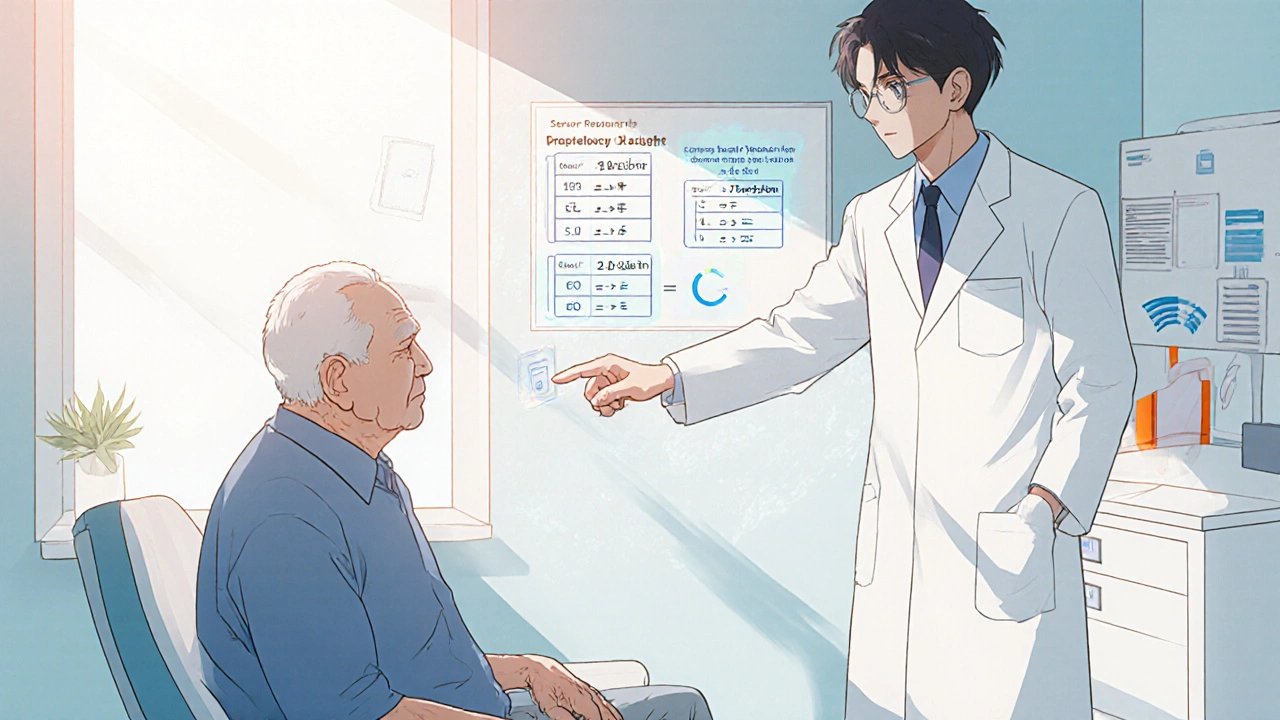Elderly Renal Impairment Dosing
When working with elderly renal impairment dosing, the practice of adjusting medication doses for older adults whose kidneys work less efficiently. Also known as dose adjustment in elderly with kidney disease, it aims to keep drugs effective while avoiding toxicity. renal function assessment, measuring how well the kidneys filter waste, often using creatinine clearance or eGFR is the first step; without a clear picture of kidney performance you’re guessing. The next piece of the puzzle is creatinine clearance, a calculated estimate of how much blood the kidneys clear of creatinine each minute. This number feeds directly into dose adjustment guidelines, standard tables or equations that tell you how much to reduce a drug based on the clearance value. Finally, you have to respect elderly pharmacokinetics, the way age‑related changes in absorption, distribution, metabolism, and excretion alter drug behavior. Together these concepts form a clear chain: renal function assessment influences creatinine clearance, which drives dose adjustment guidelines, all within the context of altered elderly pharmacokinetics.
Key Factors You Must Check Before Prescribing
First, pull the latest serum creatinine and calculate the estimated glomerular filtration rate (eGFR). If the eGFR drops below 60 mL/min/1.73 m², start treating the patient as having chronic kidney disease. Next, run the Cockcroft‑Gault equation to get a creatinine clearance value that accounts for age, weight, and sex; this is the metric most dosing tables rely on. Once you have that number, compare it against the drug’s specific adjustment chart—some medications need a 50 % cut‑back at 30 mL/min, others are contraindicated below 15 mL/min. Don’t forget to look at the drug’s therapeutic index: narrow‑window drugs like digoxin, certain antibiotics, and anticoagulants demand extra caution because even a small overdosing error can cause serious harm. Also, remember that many older adults take multiple medicines; drug‑drug interactions can further strain the kidneys or amplify side effects. A quick review of the patient’s medication list can reveal hidden risks, such as NSAIDs that worsen renal perfusion or potassium‑sparing diuretics that raise serum potassium when the kidneys can’t excrete it.
Putting all of this together gives you a roadmap for safe prescribing. You’ll know when to lower the dose, when to choose a different drug, and when to monitor more closely with blood tests. Below you’ll find a curated collection of articles that walk through specific drug classes, real‑world dosing examples, and tools you can use in practice. Whether you’re a seasoned pharmacist, a clinician refreshing your knowledge, or a caregiver trying to understand the numbers, the posts that follow break down the science into actionable steps you can apply today.
Elderly Renal Impairment: Safe Medication Dosing Strategies to Avoid Toxicity
Learn how to estimate kidney function in seniors and adjust medication doses safely to prevent toxicity, with practical tables, guidelines, and emerging tools.

